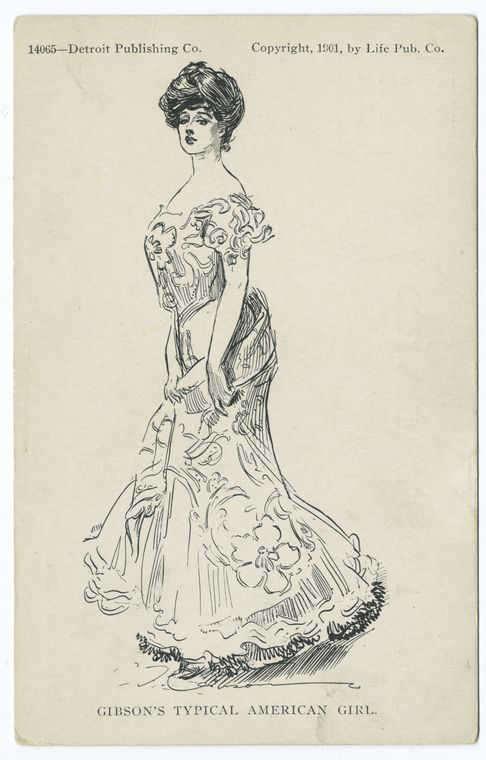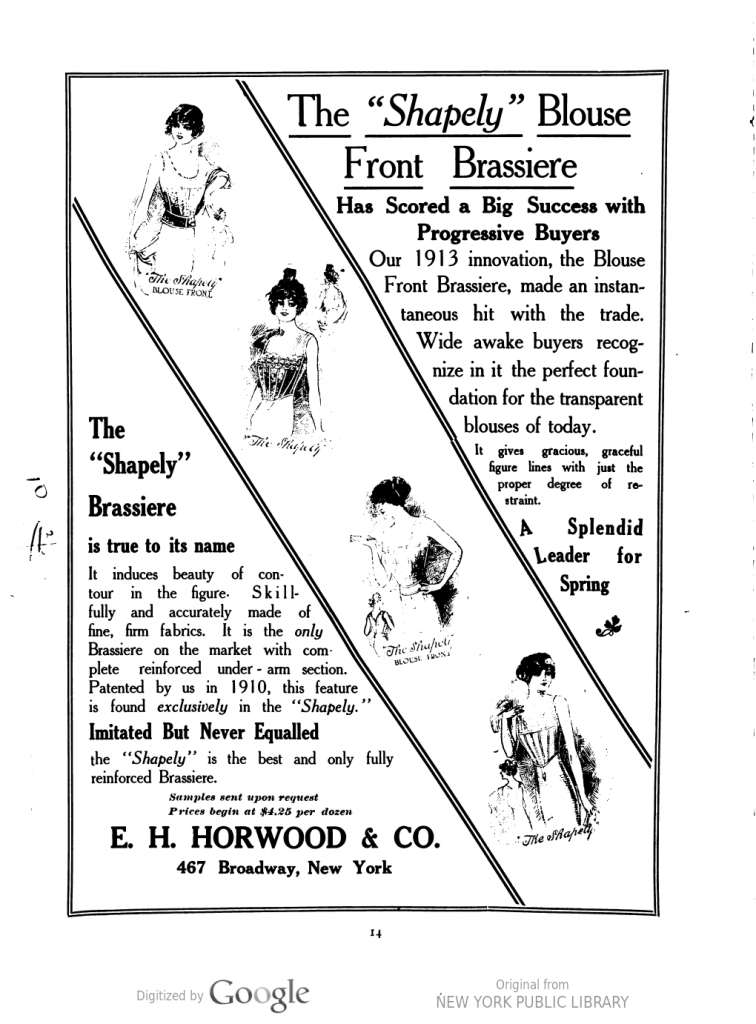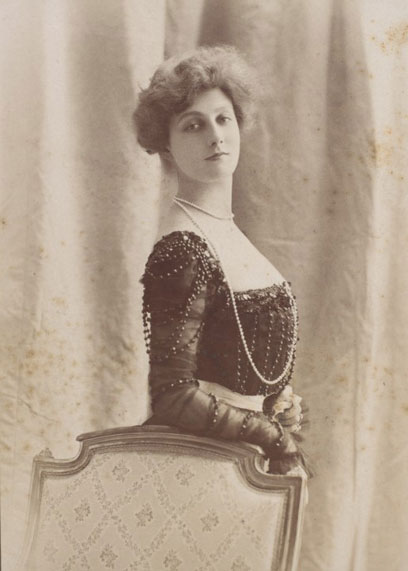Gibson Girl- 1895

This source is an illustration of a “Gibson Girl” a young woman drawn by Charles D Gibson. She wears an ornate, floor-length embroidered gown with a full skirt. The sleeves are short and fall around her shoulders to show off her decollate and full bust. Her chest is pushed forward and her hips back. The woman in the illustration is a fictional character, inspired by one of three famous sisters, the Langhornes. Gibson married one of the sisters and drew his famous illustrations to represent the “New Woman,” an active, knowledgeable woman who played sports, talked about politics and worked on reform movements. This figure became an icon for women of the late Gilded age, inspiring them to dress in looser clothes which encouraged movement and suited their needs of moving around outside of the home.
Corset Advertisement- 1913

Corset and Underwear Review 1913
This source is an advertisement from The Corset and Underwear Review a book published in 1913, filled with advertisements and articles about corsets and underwear. This particular page advertises “The Shapley Blouse Front Brassiere” which boasts it unique “complete reinforced underarm section” and its suitability for transparent blouses. The page has illustrations of women wearing different versions of the brassiere. This source shows that women desired that full-bosom look in the 1930s, and in addition to that, it reinforces the popularity of blouses. The source explains that the brassiere gives “just the proper degree of restraint.” This is significant because it shows that the tide had not yet turned for women to reject restrained corsets. Advertisements such as these beg the question: were women dressing for the male gaze? As these articles seem to be uncomfortable, it would only make sense that women dressed this way to be seen as desirable by men. Further, were men making up these trends?
Henriette Henriot- 1910s

This source is a photo of Henriette Henriot, taken by C.H. Reutlinger in the 1910s. She represents a woman dressing in the Gibson girl style with her hair is piled atop her head, her chest thrust forward, while her hips are pushed back. She is shaped in the ideal “s-shaped” curve that was so desired by women and dubbed the “pouter pigeon.” Only her top-half is visible, and she sports a low neckline that shows off her chest. The garment is heavily beaded and very ornate, and the sleeves and the bodice are heavily draped in fabric. This photo was taken for her calling card, a small piece of paper that women would leave at the home of whoever they visited. Calling cards marked a shift in women’s lives when visiting friends and acquaintances outside of the home became the norm. This source is insightful because it shows us what a very sophisticated woman wore and proves that Edwardian women did indeed wear s-shaped corsets.
